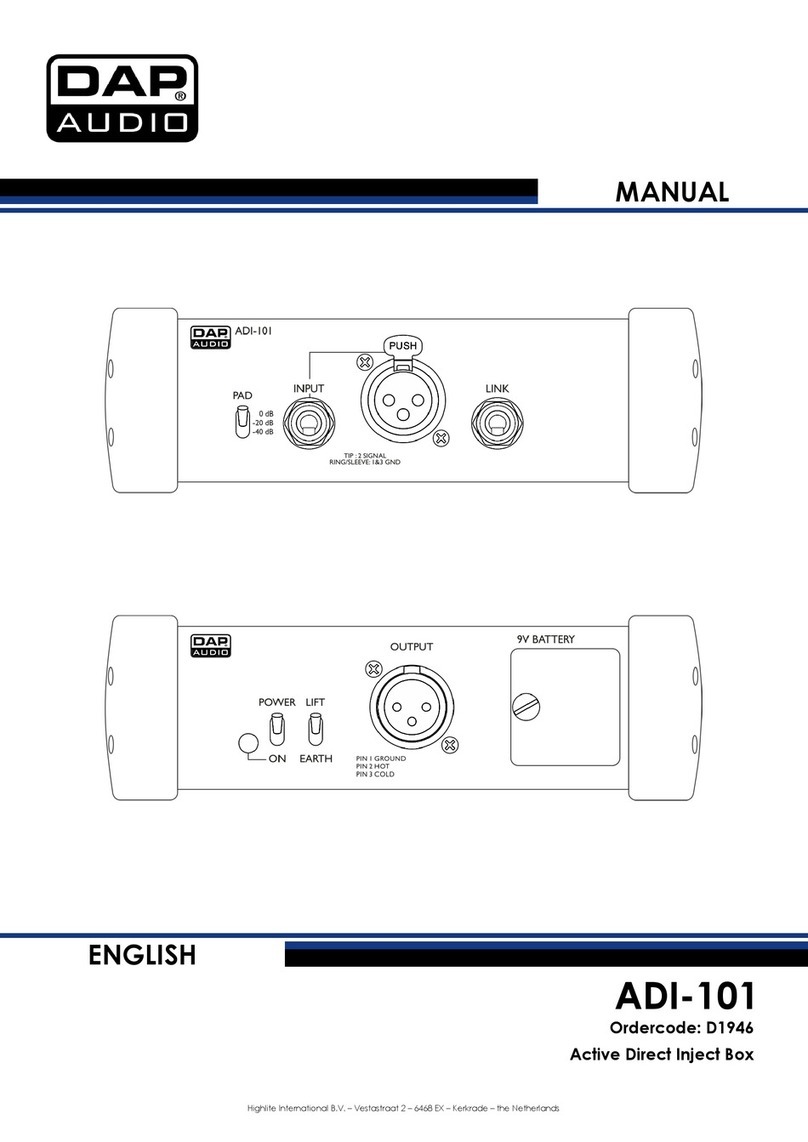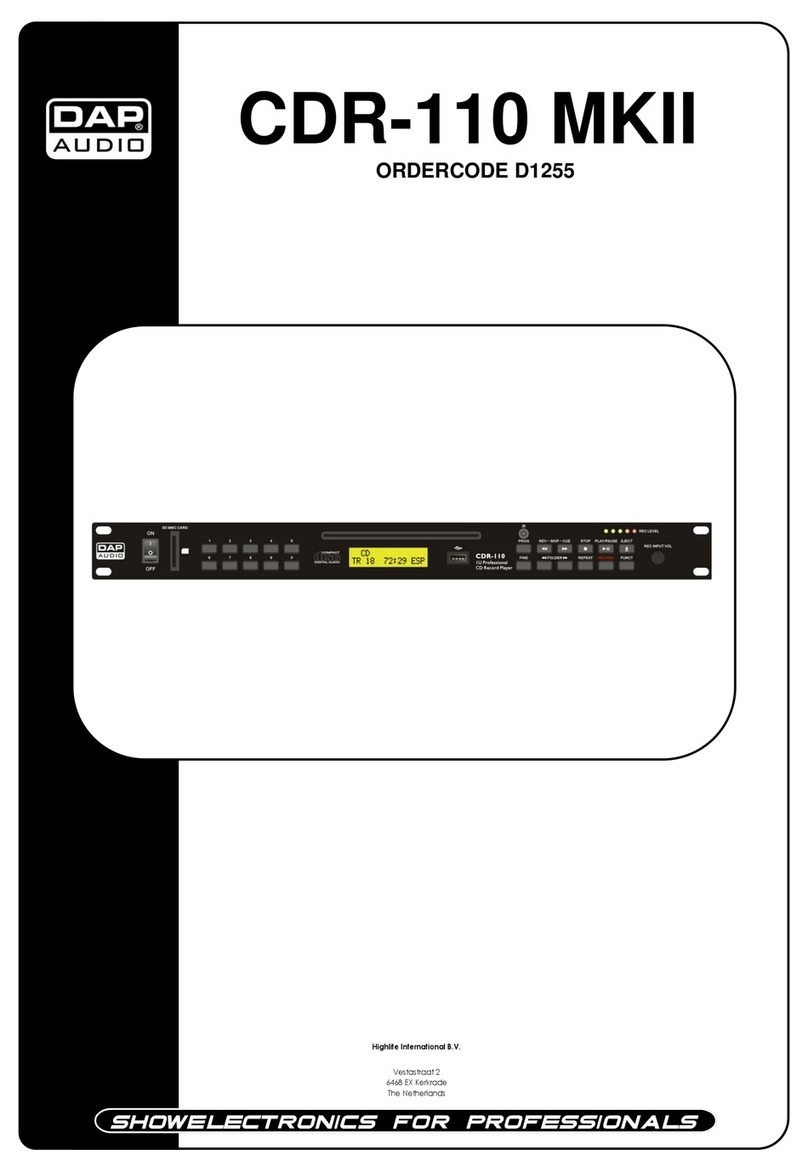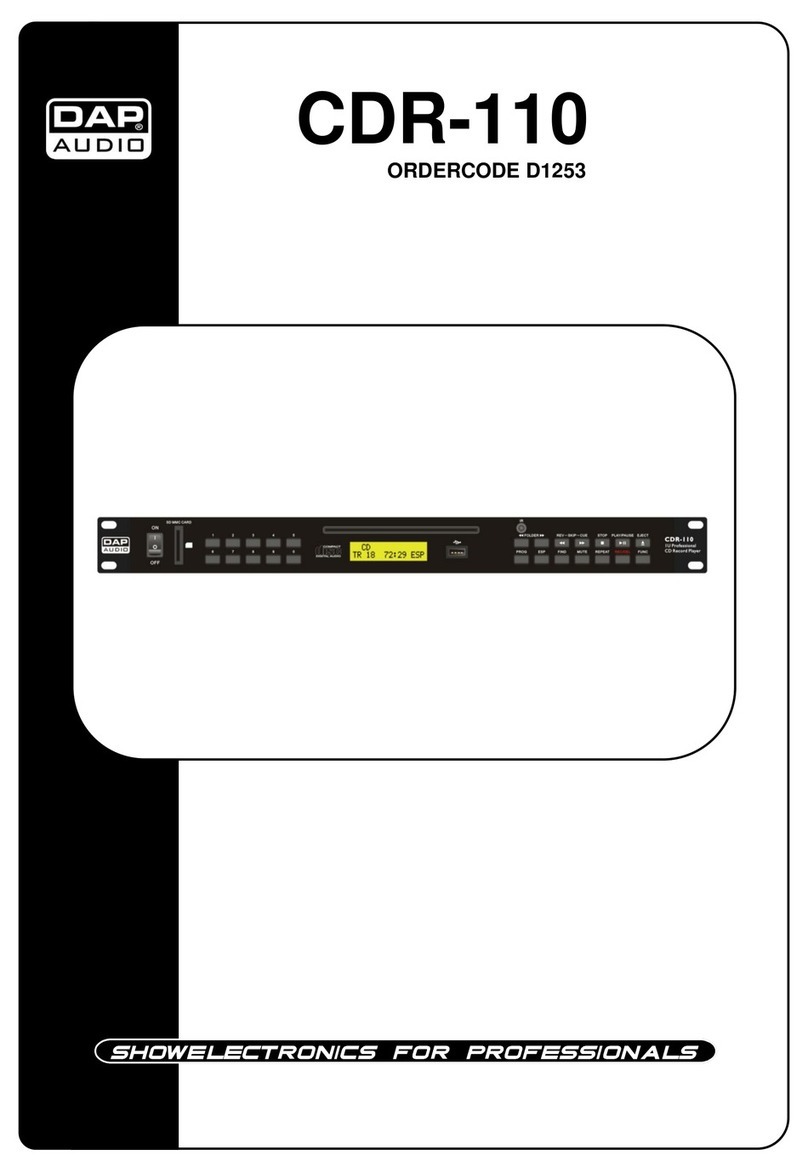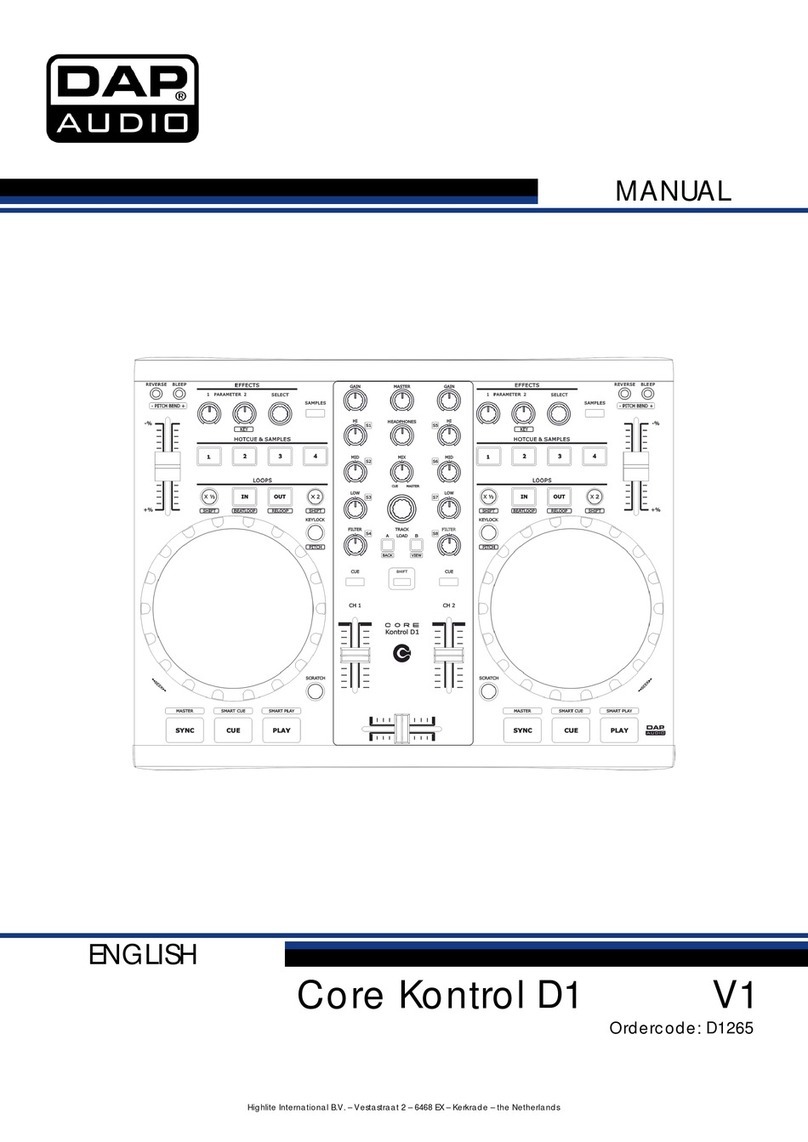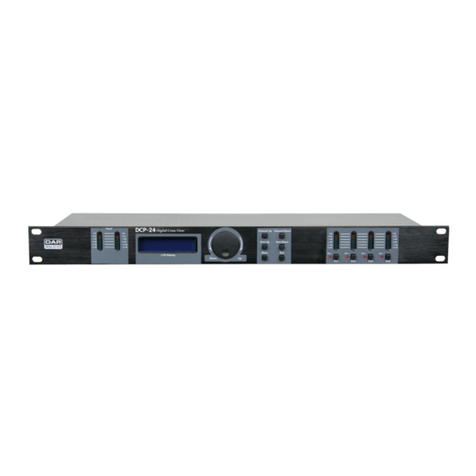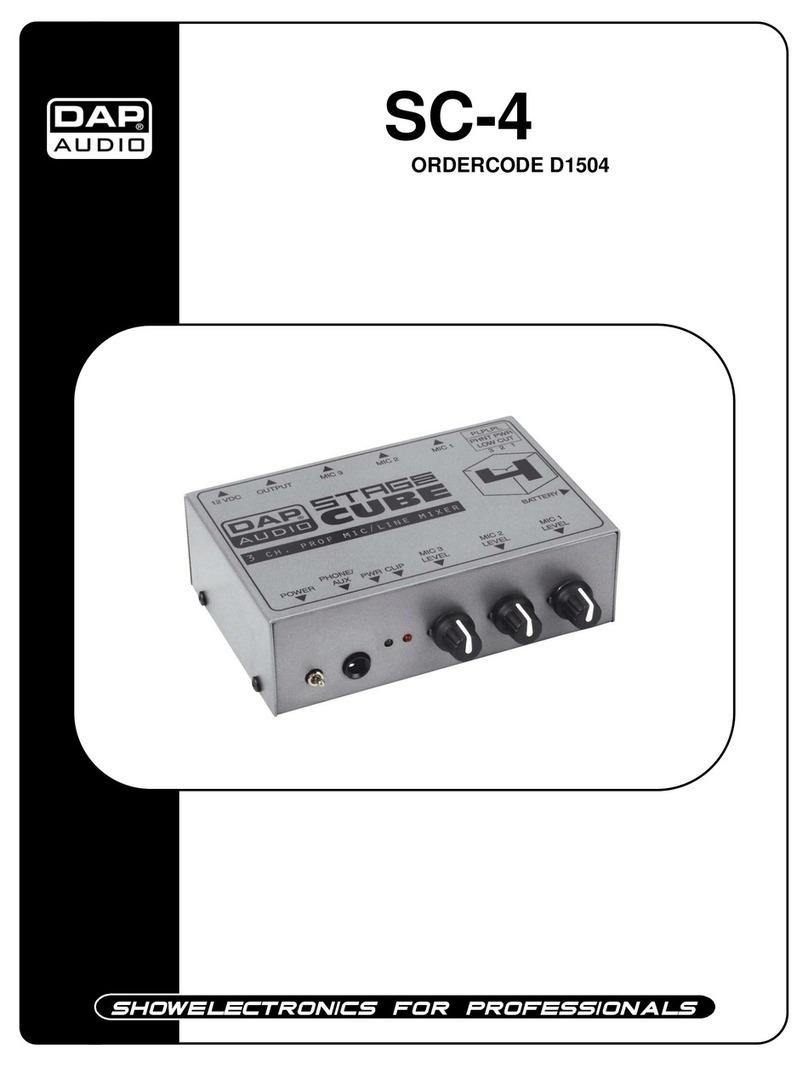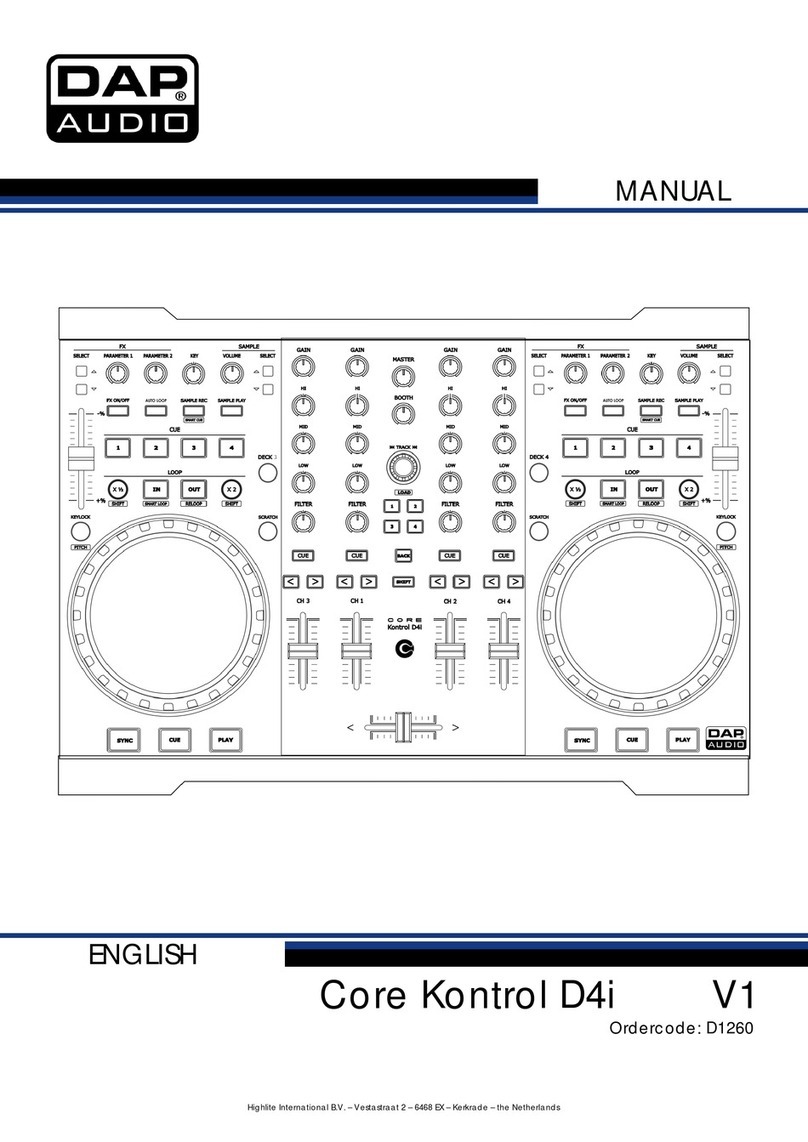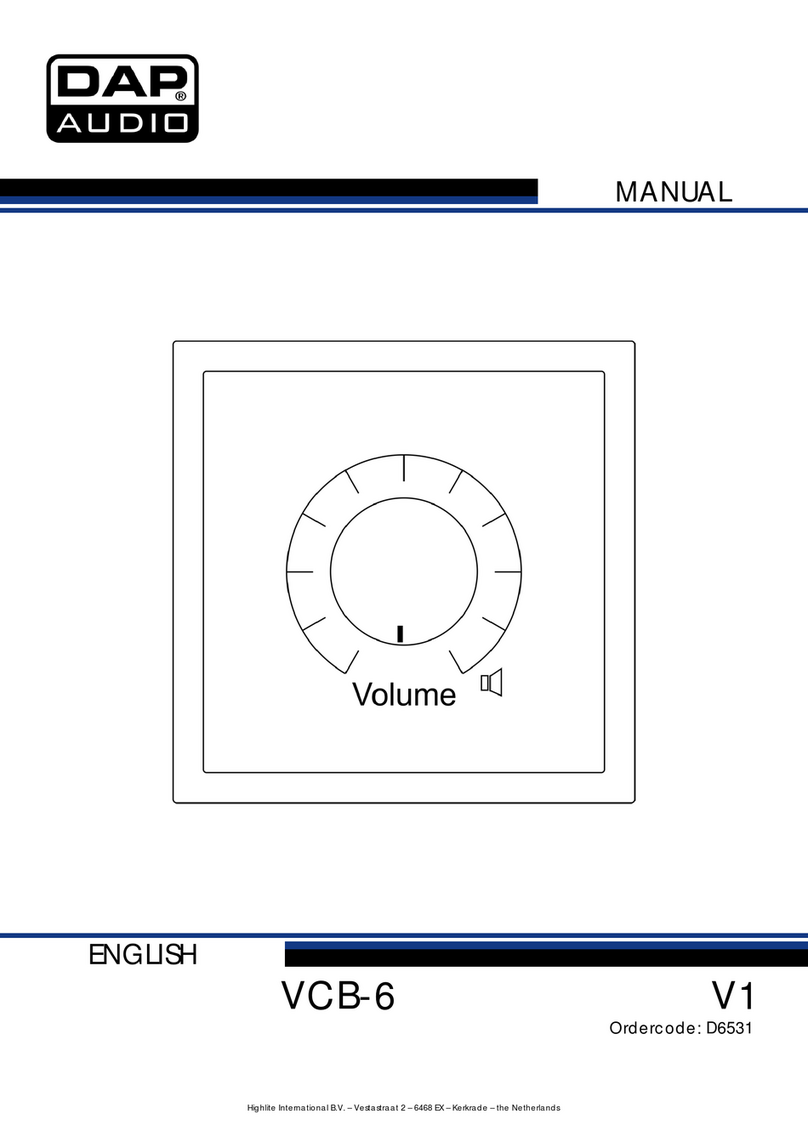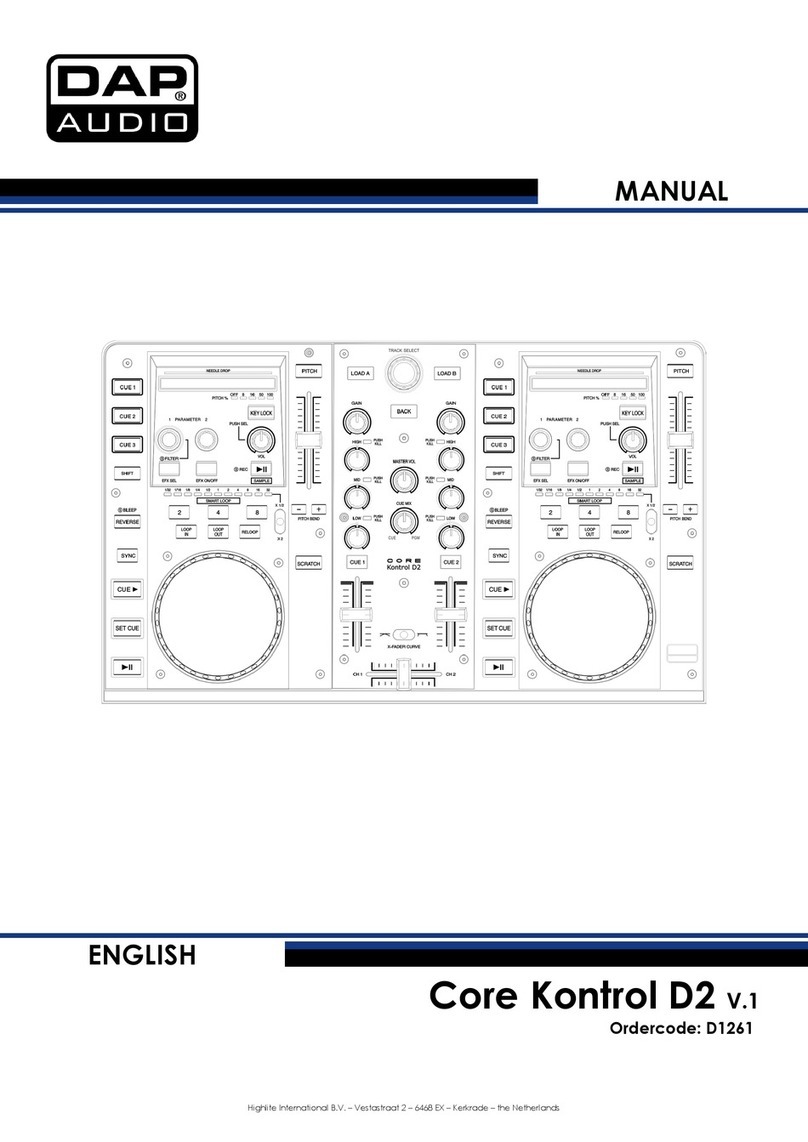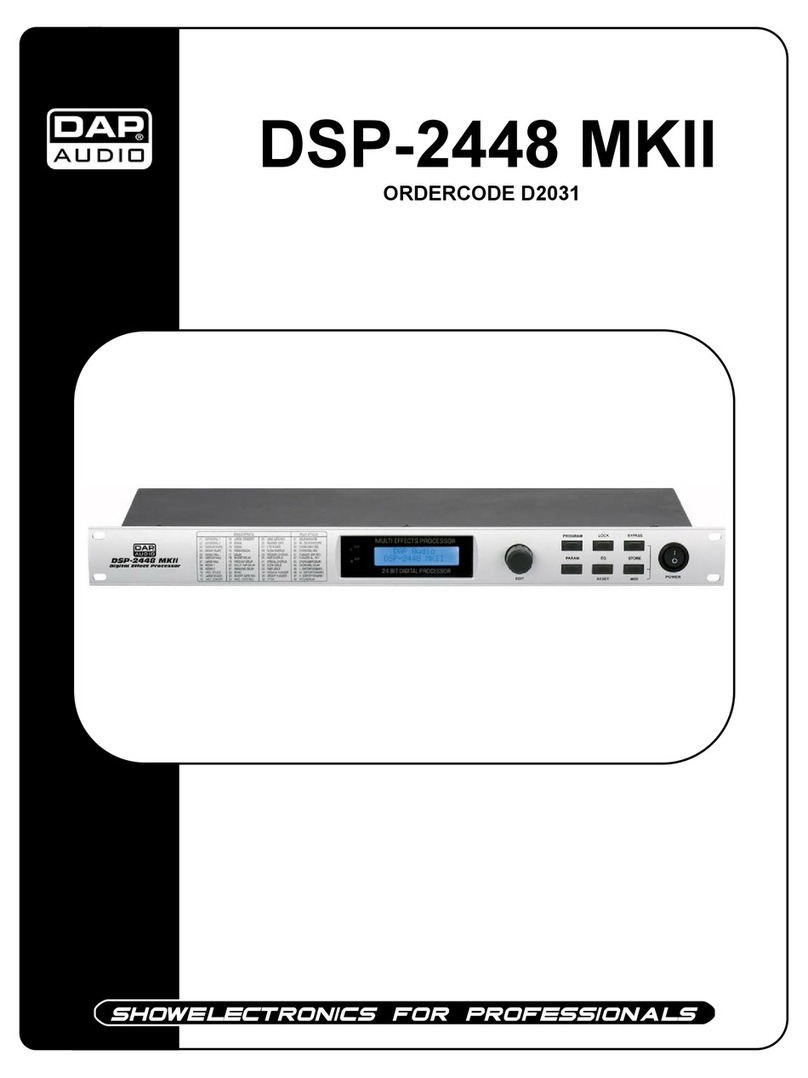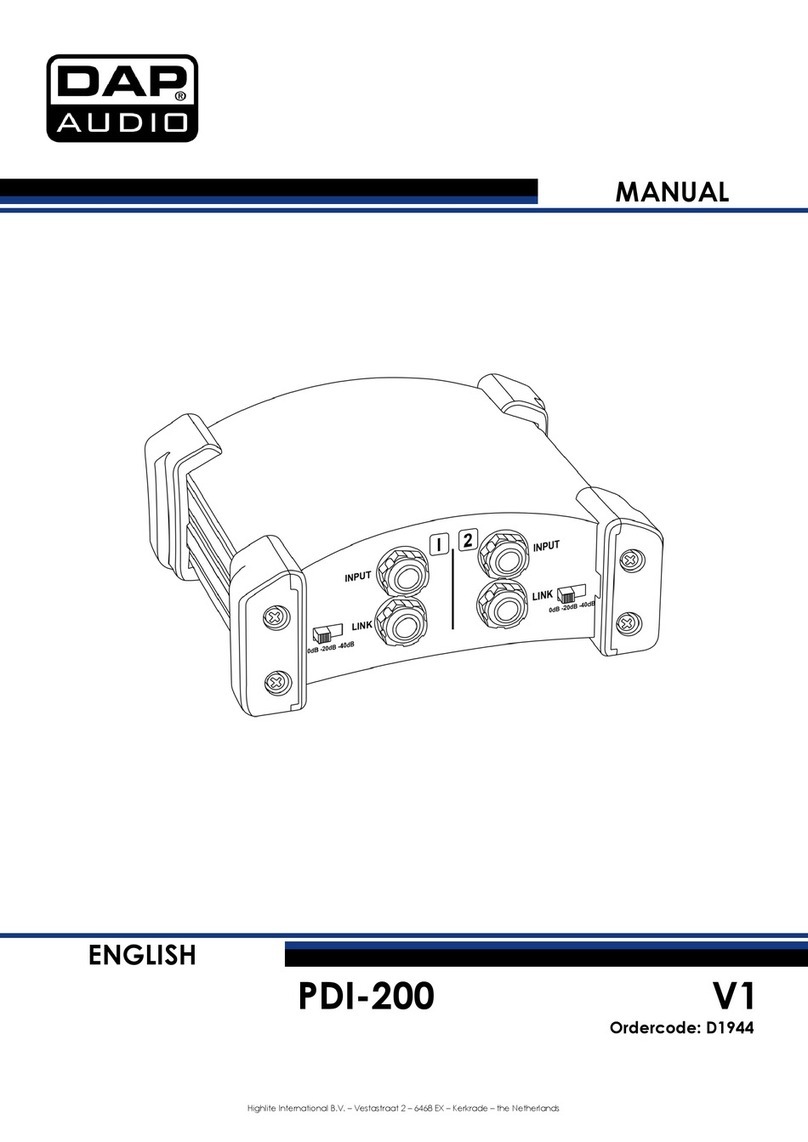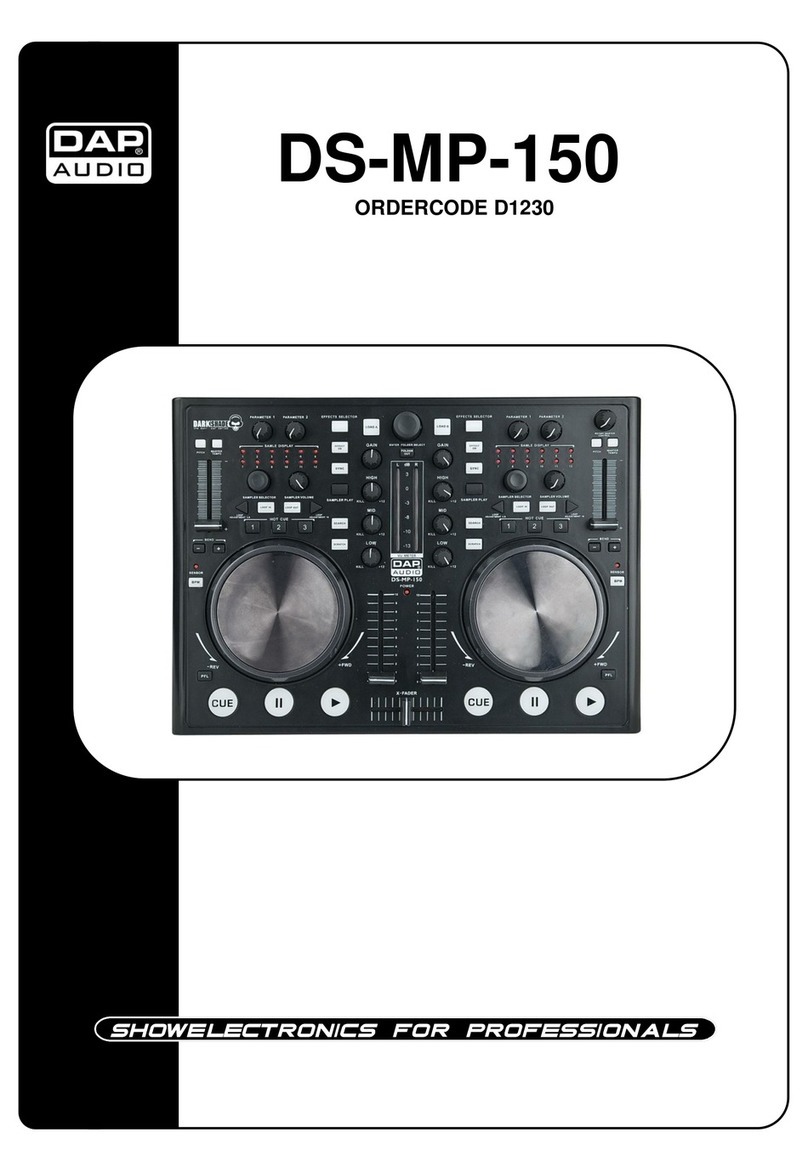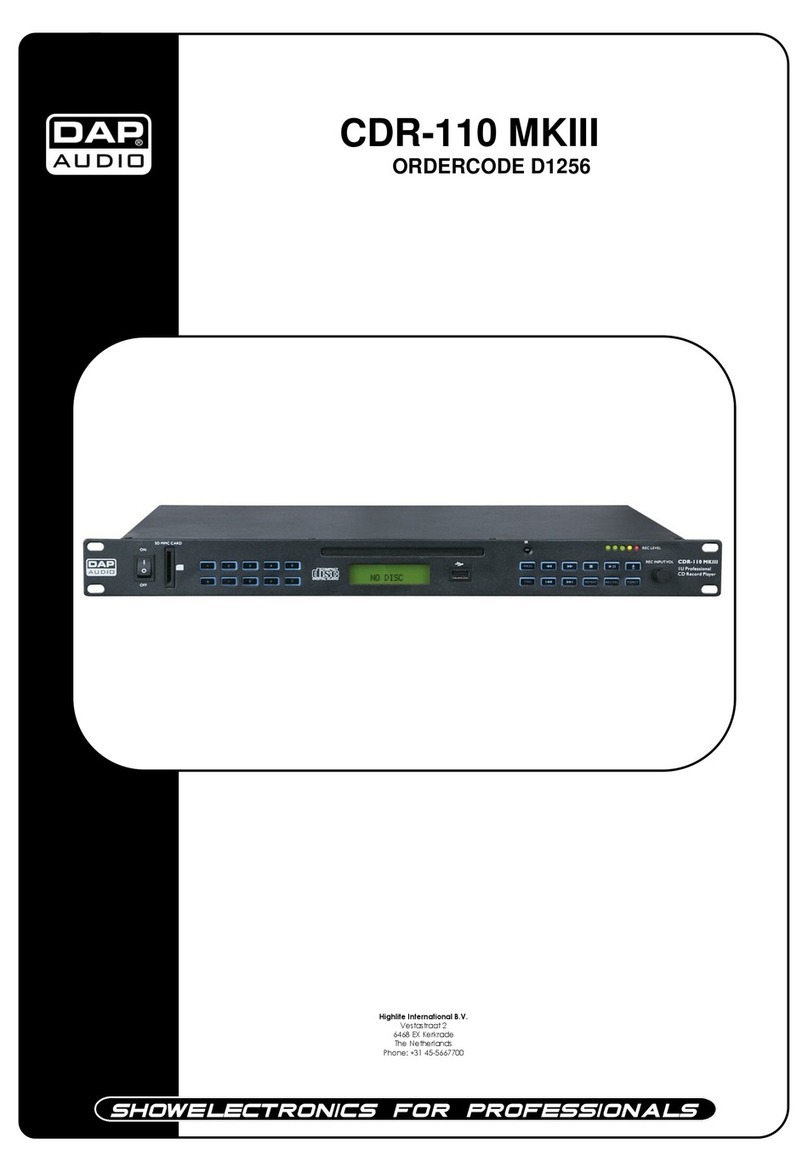
DAP Audio
DAP Audio Core Kontrol D1™Product Guide
Warning...................................................................................................................................................................................................3
Safety Instructions.............................................................................................................................................................................3
Operating Determinations..............................................................................................................................................................4
Return Procedure .............................................................................................................................................................................5
Claims.................................................................................................................................................................................................5
Description .............................................................................................................................................................................................6
Overview............................................................................................................................................................................................6
Deck 1/2 ............................................................................................................................................................................................7
Mixer ...................................................................................................................................................................................................8
Frontside.............................................................................................................................................................................................9
Backside.............................................................................................................................................................................................9
Installation ..............................................................................................................................................................................................9
Set Up and Operation...........................................................................................................................................................................9
Names and Functions........................................................................................................................................................................ 10
Deck Functions .............................................................................................................................................................................. 10
Mixer Functions .............................................................................................................................................................................. 11
Front Functions............................................................................................................................................................................... 12
Back Functions............................................................................................................................................................................... 13
Operations........................................................................................................................................................................................... 13
Selecting Folders ........................................................................................................................................................................... 13
Selecting tracks using the track select encoder ..................................................................................................................... 13
Starting Playback .......................................................................................................................................................................... 13
Stop Playback................................................................................................................................................................................ 13
Pausing............................................................................................................................................................................................ 13
Setting a Cue Point ....................................................................................................................................................................... 13
Setting a hot cue point in pause mode.................................................................................................................................... 14
Setting a hot cue point in play mode ....................................................................................................................................... 14
Deleting a hot cue point ............................................................................................................................................................. 14
Cueing ............................................................................................................................................................................................ 14
Seek (fast forward/fast backward)............................................................................................................................................ 14
Changing pitch of the song........................................................................................................................................................ 14
Pitch bending ................................................................................................................................................................................ 14
Loop play........................................................................................................................................................................................ 15
Beat loop play ............................................................................................................................................................................... 15
Reloop............................................................................................................................................................................................. 15
Recording a sample ..................................................................................................................................................................... 15
Sample playback.......................................................................................................................................................................... 15
Software Installation........................................................................................................................................................................... 16
Running the setup program. ....................................................................................................................................................... 17
Running the Virtual DJ-software for the first time .......................................................................................................................... 19
Interface zones.............................................................................................................................................................................. 21
Browser panels............................................................................................................................................................................... 22
Sampler panels.............................................................................................................................................................................. 22
Effects panels................................................................................................................................................................................. 22
Record panels ............................................................................................................................................................................... 23
Maintenance ...................................................................................................................................................................................... 23
Troubleshooting .................................................................................................................................................................................. 23
Product Specification ........................................................................................................................................................................ 24
Appendix 1: Midi Implementation .................................................................................................................................................. 25
